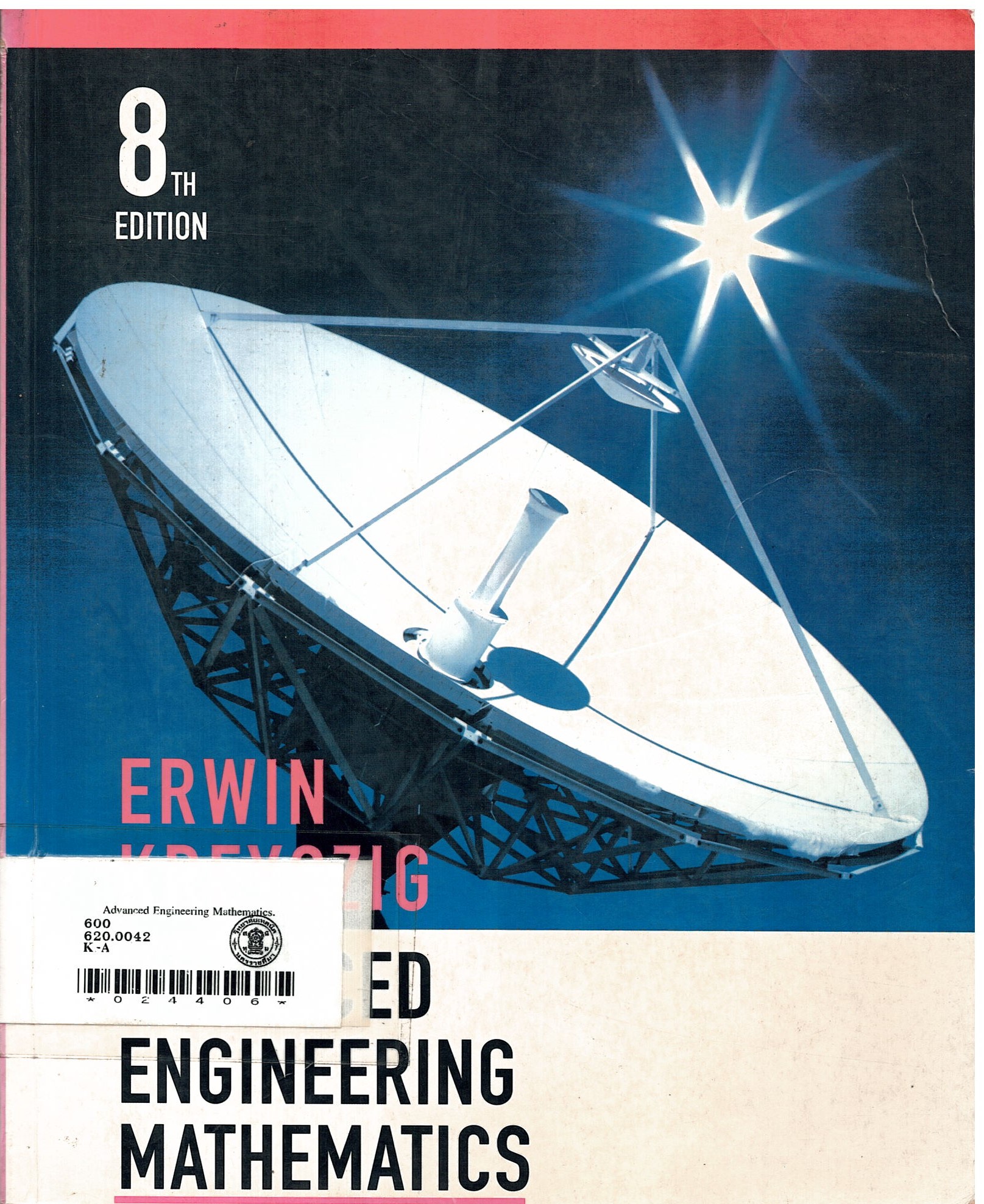ข้อมูลทรัพยากร

Advanced Engineering Mathematics.
ประเภททรัพยากร : หนังสือเล่ม
ชั้นเก็บ : ตู้ 9 ชั้น 5 ฝั่งขวา
หมวด : 600
เลขหมู่หนังสือ : 620.0042
สำนักพิมพ์ : Joho Wiley & Son Inc.
ผู้แต่ง : Kreyszig, Erwin.
ยอดคงเหลือ : 1
เนื้อหาย่อ : PREFACE
See also http://www.wiley.com/college/mat/kreyszig154962/
Purpose of the Book
This book introduces students of engineering, physics, mathematics, and computer science
to those areas of mathematics which, from a modern point of view, are most important in
connection with practical problems.
The content and character of mathematics needed in applications are changing rapidly.
Linear algebra--especially matrices--and numerical methods for computers are of
increasing importance. Statistics and graph theory play more prominent roles. Real analysis
(ordinary and partial differential equations) and complex analysis remain indispensable.
The material in this book is arranged accordingly, in seven independent parts (see also
the diagram on the next page):
A Ordinary Differential Equations (Chaps. 1-5)
B Linear Algebra, Vector Calculus (Chaps. 6-9)
C Fourier Analysis and Partial Differential Equations (Chaps. 10, 11)
D Complex Analysis (Chaps. 12-16)
E Numerical Methods (Chaps. 17-19)
F Optimization,Graphs (Chaps.20,21)
G Probability and Statistics (Chaps. 22,23)
This is followed by
References (Appendix 1)
Answers to Odd-Numbered Problems (Appendix 2)
Auxiliary Material(Appendix 3 and inside of covers)
Additional Proofs (Appendix
Tables of Functions (Appendix 5).
This book has helped to pave the way for the present development and will prepare
students for the present situation and the future by a modern approach to the areas listed
above and the ideas--some of them computer related--that are presently causing basic
changes: Many methods have become obsolete. New ideas are emphasized, for instance,
ility, error estimation, and structural problems of algorithms, to mention
Trends are driven by supply and demand: supply of powerful new mathematical and
computational methods and of enormous computer capacities, demand to solve problems
of growing complexity and size, arising from more and more sophisticated systems or
production processes, from extreme physical conditions (for example, those in space
travel), from materials with unusual properties (plastics, alloys, superconductors, etc.), or
from entirely new tasks in computer vision, robotics, and other new fields.
The general trend seems clear. Details are more difficult to predict. Accordingly,
students need solid knowledge of basic principles, methods, and results, and a clear
ption of what engineering mathematics is all about, in all three phases
deling: Translating given physical or other information and
mathematical form, into a mathematical model (a differential equation, a system of
equations, or some other expression).
problems: